Definition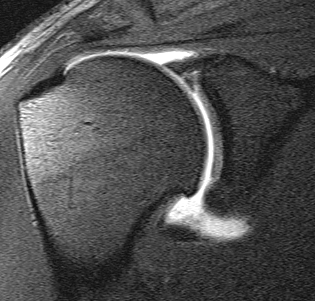
Superior labrum anterior & posterior
Injury to superior part of glenoid labrum involving region of biceps tendon insertion
Epidemiology
2 groups
1. Young patients
- most common in young males
- fall / trauma
- also associated with glenohumeral instability
2. Older patients
- have rotator cuff tear or other pathology
- don't repair in this group
- tenotomy / tenodesis
Aetiology
Three mechanisms
1. Compression force applied to GHJ
- FOOSH
- commonest
- arm in abduction & forward flexion
- head subluxes superiorly over glenoid edge & detaches labrum by shear & compression
2. Traction on Arm
- sudden pull on arm
- grab while falling
3. Overhead motion
- throwing thlete
- repetitive microtrauma due to eccentric loading
History
Pain with overhead activities
Catching or popping with overhead activities
Acute trauma
Mimics impingement
Examination
Speed's Test
Yergason's Test
O'Brien's test
Causes impingement of biceps on anterosuperior labrum
1. Shoulder flexed 90o in plane of scapula
- adducted 30-45o / max IR
- i.e. thumb down
- resisted elevation produces pain
2. Relieved when same again but with ER
- i.e. no pain with thumbs up
McMurray's Shoulder test
Compression-Rotation test
- patient supine
- shoulder abducted 90°, elbow flexed 90°
- compression force to humerus and humerus rotated
- attempt to trap torn labrum
- positive if pain & click
MRA
See fluid up under biceps insertion
- note: difficult to distinguish pathological v normal variant
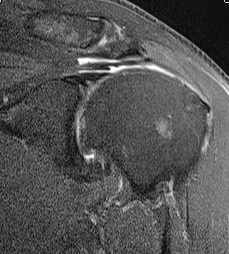

Supralabral ganglion cyst
- associated with posterior SLAP tears
Normal Arthroscopy
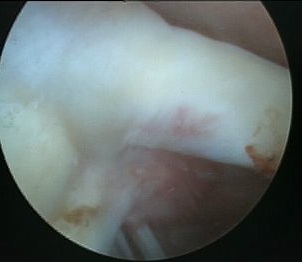
Arthroscopic Classification Snyder
Type 1 (10%)
- fraying & degeneration of the edge of superior labrum
- firmly attached labrum and biceps anchor
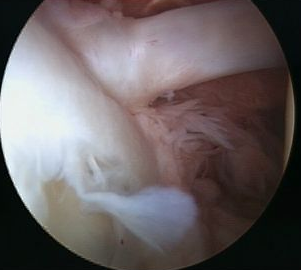
Type 2 (40%)
- Superior labrum + Biceps tendon stripped off glenoid
Subtypes
- anterior
- posterior
- anterior and posterior

Type 3 (30%)
- bucket handle tear of superior labrum
- displacement of labrum into joint
- biceps tendon attached to glenoid
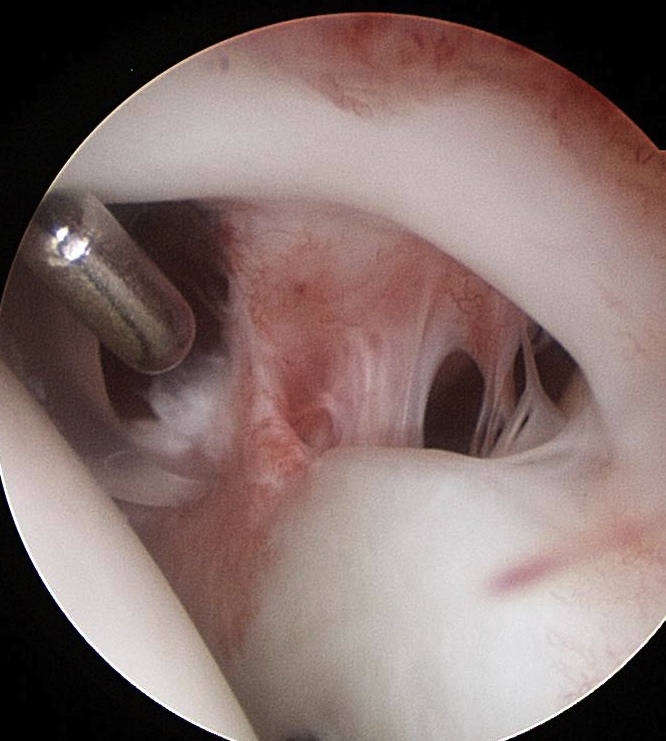
Type 4
- bucket handle tear of superior labrum with part of biceps
- extension into biceps tendon which remains attached but with partial tear
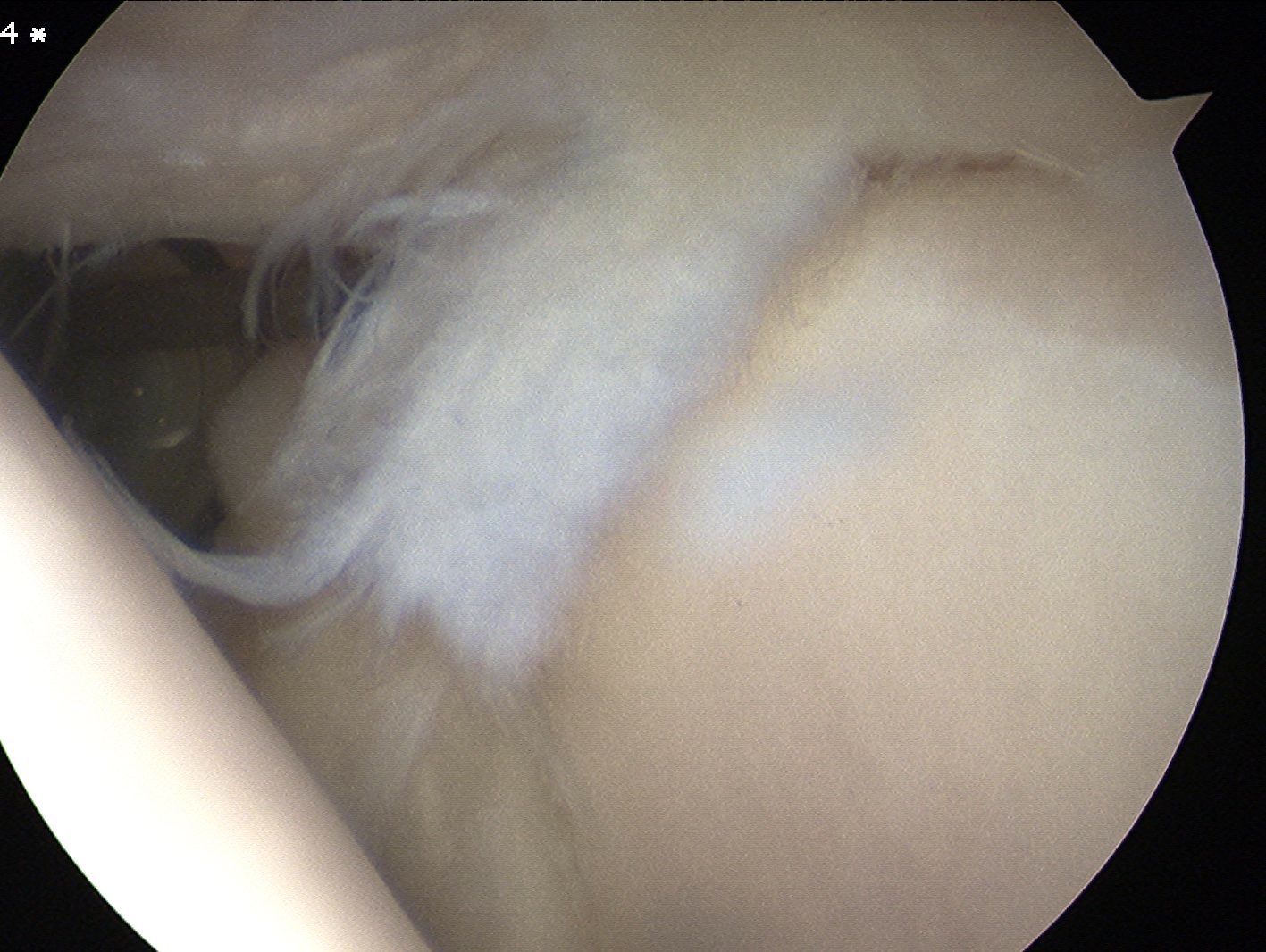
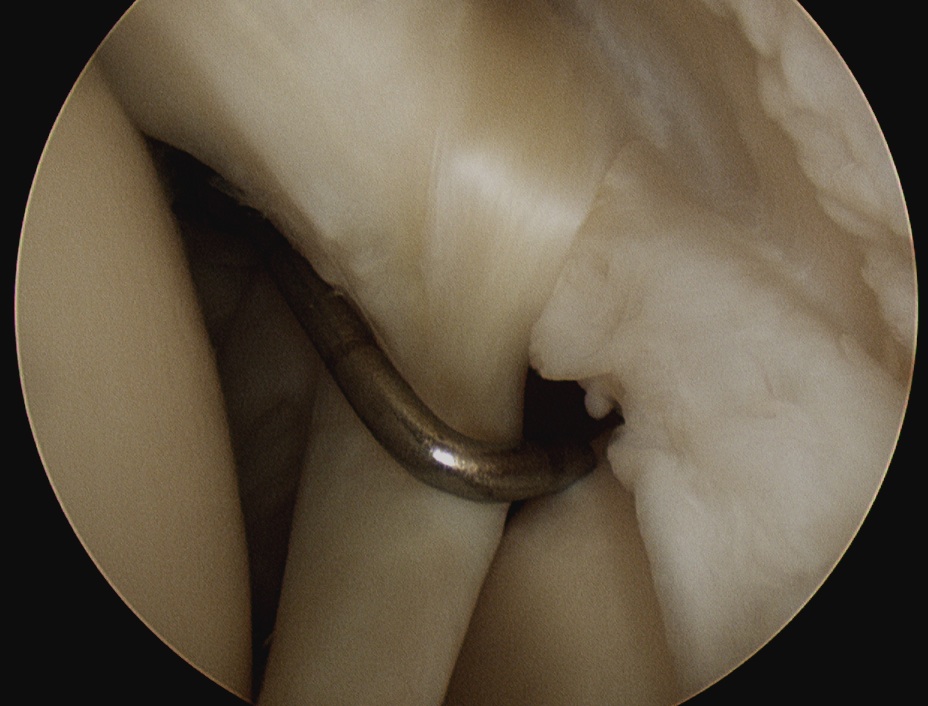
Type 5 - 7 added by Gartsman
Type 5
- SLAP 2 with anterior bankart extension
Type 6
- SLAP 2 with free flap of meniscal tissue
Type 7
- Slap 2 with anterior bankart extension and into MGHL
Normal Variations of the Superior Labrum
The superior labrum can be mobile
- normal cartilage extending over the tubercle
- no evidence of trauma
- the labrum and biceps is firmly attached to the tubercle
- this is not pathological
- do not repair
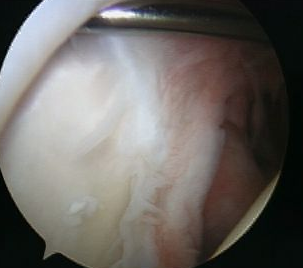
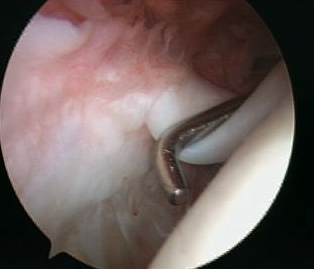
Davidson et al Am J Sports Medicine 2004
- described normal variations
1. Triangular
2. Bumper
- lump of fibrous tissue
3. Meniscoid
- labrum extends down over glenoid face
Management
Non Operative
Trial
- physio
- HCLA
Operative
Arthroscopic diagnosis
- high level of pre-operative suspicion
- must establish is pathological
- treated at time of arthroscopy
Options
1. Debridement of frayed labrum / Type 1 & 3
2. Repair superior labrum and biceps / Type 2
3. Biceps tenodesis
4. Tenotomy
Issues
1. Older patient with RC tear and SLAP
Francheschi Am J Sports Med April 2008
- RCT patients with SLAP and RC > 50
- tenotomy v SLAP repair in setting RC tear
- improved ROM and functional scores in tenotomy group
2. Repair v Tenodesis Type II SLAP
Boileau et al Am J Sports Med May 2009
- compared cohort arthroscopic repair v arthroscopic tenodesis in overhead athletes (Level 3 evidence)
- repair group 40% satisified, 20% returned to previous level of sport
- tenodesis patients 93% satisified, 87% return to previous level of sport
Altcheck et al JBJS Am 2009
- case series of 37 athletes with SLAP 2 repair
- 87% rated outcome as good or excellent
- 75% able to return to previous level of sport
- this was higher (92%) if athlete described a discrete traumatic event
3. SLAP and instability in young patient
- SLAP lesions can cause instability
- a SLAP lesion can contribute to inferior instability
- a SLAP and a Bankart can co-exist

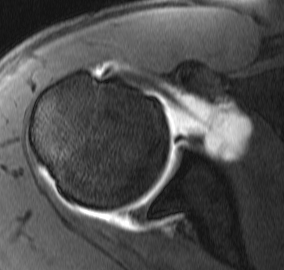
Management Algorithm
Type 1
Debride labrum
Type 2
A. Arthroscopic repair
B. Tenotomy / tenodesis
Type 3
Debride bucket handle labrum
Type 4
Remove labral flap
Repair / debride / tenodesis biceps
- may be evidence that do better with tenodesis
Types 5 - 7
- associated with instability
- repair as per treatment of instability
